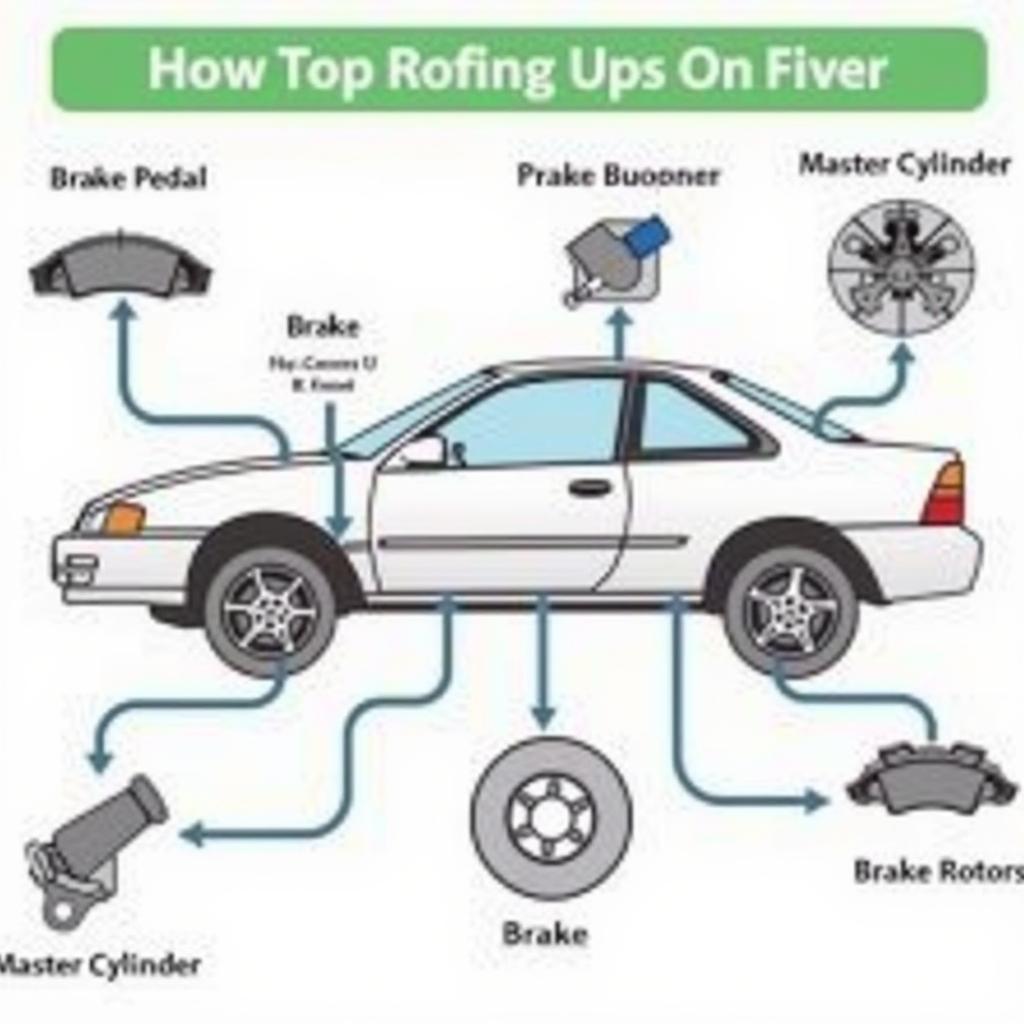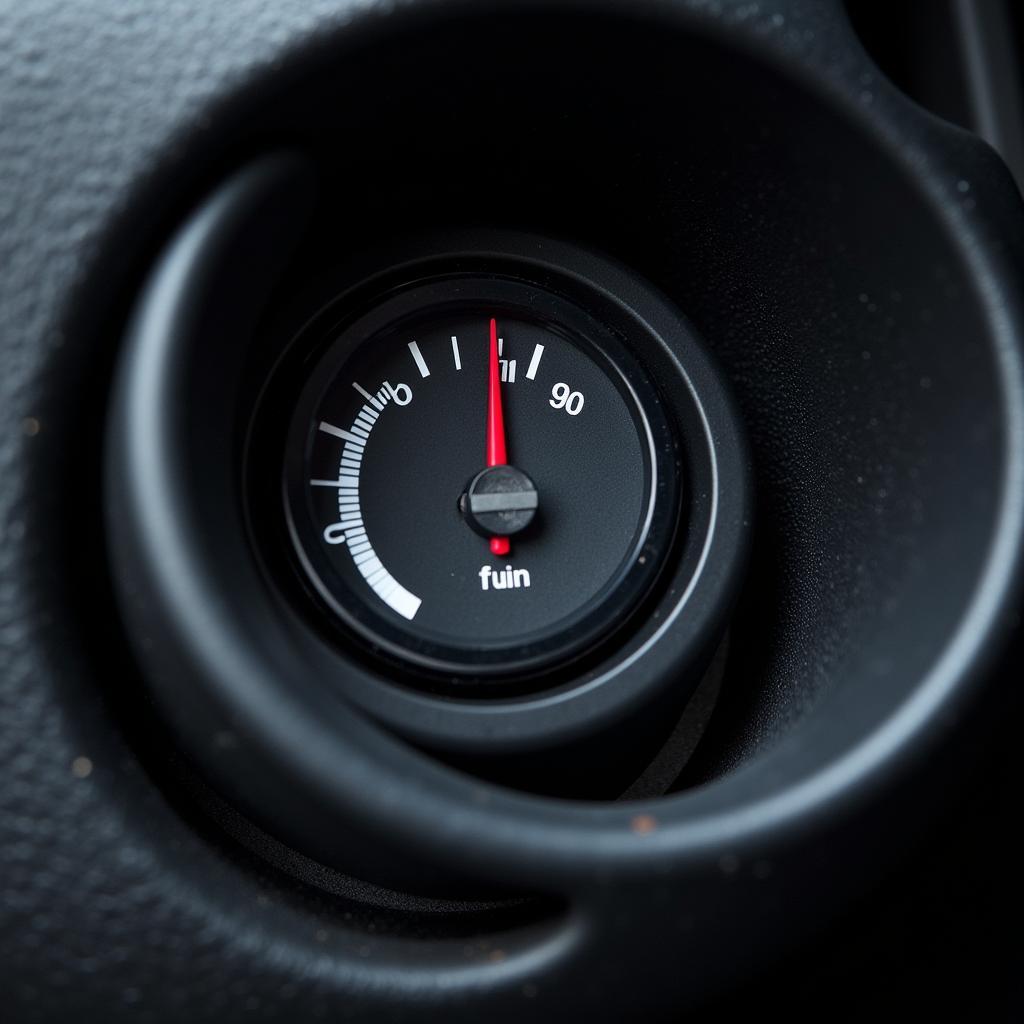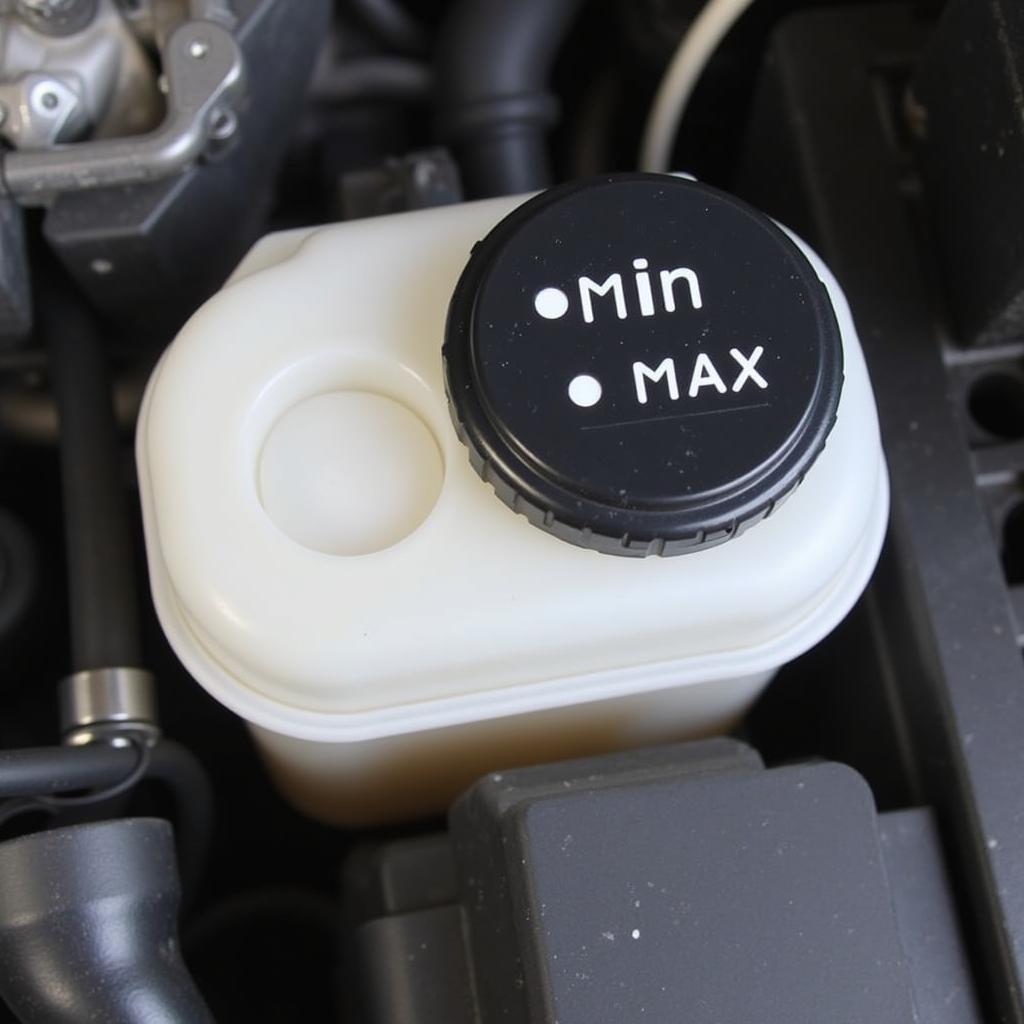The brake failure warning light, often a red exclamation mark within a circle, is one of the most critical warning lights on your dashboard. It signals a problem with your vehicle’s braking system, requiring immediate attention to ensure your safety and that of others on the road.
Understanding Your Car’s Braking System
Before delving into the causes of a brake failure warning light, it’s crucial to understand the basics of your car’s braking system. Modern vehicles utilize a hydraulic system that amplifies the force you apply to the brake pedal, transferring it to the wheels and bringing the car to a stop.
This system comprises several key components:
- Brake pedal: The lever you press to initiate braking.
- Brake booster: This amplifies the force from your foot to the master cylinder.
- Master cylinder: This converts the mechanical force into hydraulic pressure.
- Brake lines: These carry the pressurized brake fluid to the wheels.
- Brake calipers: These house the brake pads and pistons that squeeze the brake rotors.
- Brake rotors: These discs rotate with the wheels, and the brake pads clamp down on them to create friction and stop the vehicle.
 Car Brake System Components Diagram
Car Brake System Components Diagram
Common Causes of a Brake Failure Warning Light
The brake failure warning light can illuminate for several reasons, ranging from simple issues to more serious problems. Here’s a breakdown of common causes:
1. Low Brake Fluid Level
One of the most common and straightforward reasons for the warning light is low brake fluid. As brake pads wear down, the brake fluid level in the reservoir naturally drops. If it falls below a certain point, the warning light will trigger.
 Car Brake Fluid Reservoir Showing Low Fluid Level
Car Brake Fluid Reservoir Showing Low Fluid Level
Solution: Check your brake fluid level and top it up if necessary. Consult your owner’s manual for the correct type of brake fluid for your vehicle. If you find yourself topping up frequently, it’s crucial to have your braking system inspected for leaks.
2. Worn Brake Pads
Brake pads are designed to wear down over time. When they become too thin, a sensor within the brake pad assembly triggers the warning light. This indicates that your brake pads need replacement.
Solution: Replace your brake pads as soon as possible. Driving with worn brake pads can significantly reduce braking effectiveness and lead to more expensive repairs, such as damaged rotors.
vw golf tdi brake warning lights manual
3. Brake Fluid Leak
A leak in the brake lines, hoses, or calipers can cause a drop in brake fluid pressure, triggering the warning light.
Solution: Inspect your braking system for any signs of leaks, such as fluid puddles under your car or wet spots along the brake lines. If you suspect a leak, it’s essential to have it addressed by a qualified mechanic immediately.
4. Faulty Brake Light Switch
While seemingly unrelated, a faulty brake light switch can also cause the brake failure warning light to illuminate. This switch activates your brake lights when you press the pedal. If it malfunctions, it can disrupt the electrical signals within the braking system.
Solution: Have a mechanic test and replace the brake light switch if faulty.
5. ABS Issues
Modern vehicles are equipped with an Anti-lock Braking System (ABS) that prevents wheel lockup during hard braking. A malfunction within the ABS system, such as a faulty sensor or control module, can trigger the warning light.
Solution: If you suspect an ABS issue, it’s best to have your vehicle diagnosed by a mechanic with the proper diagnostic equipment to pinpoint and repair the problem.
2014 chevy malibu brake warning light
What to Do When the Brake Failure Warning Light Comes On
If the brake failure warning light illuminates while driving, it’s crucial to take immediate action:
- Stay calm: Panicking will only worsen the situation.
- Reduce speed gradually: Avoid slamming on the brakes, as this could cause skidding or complete brake failure.
- Find a safe place to pull over: Activate your hazard lights and carefully move your vehicle off the road and away from traffic.
- Assess the situation: Check your brake fluid level and inspect for any visible leaks.
- Seek professional help: If you’re unable to identify the issue or if the brake pedal feels spongy or unresponsive, do not attempt to drive further. Call a tow truck and have your vehicle transported to a trusted mechanic for diagnosis and repair.
 Car Safely Pulled Over After Brake Failure Warning
Car Safely Pulled Over After Brake Failure Warning
Preventing Brake Failure: Importance of Regular Maintenance
Regular brake system maintenance is crucial to prevent unexpected failures and ensure optimal braking performance. This includes:
- Brake fluid flush: Brake fluid absorbs moisture over time, reducing its effectiveness. It’s recommended to flush and replace your brake fluid every 2-3 years or as specified in your owner’s manual.
- Brake inspection: Have your brakes inspected by a qualified mechanic at least once a year or every 12,000 miles. They will check the condition of your brake pads, rotors, calipers, hoses, and lines for wear and tear.
- Timely repairs: Address any brake-related issues promptly. Ignoring minor problems can escalate into more serious and costly repairs down the line.
how long can you drive with brake pad warning light
Remote Diagnostics and Software Solutions for Brake Issues
In today’s technologically advanced automotive landscape, remote diagnostics and software solutions are playing an increasingly vital role in identifying and resolving brake-related issues. By leveraging specialized software and remote access capabilities, automotive technicians can now diagnose and even repair certain brake problems without the need for a physical inspection.
For instance, software updates can address issues with the ABS control module, while remote diagnostics can pinpoint faulty sensors or other electronic malfunctions within the braking system. This not only saves time and money but also provides a convenient and efficient solution for car owners.
Conclusion
The brake failure warning light should never be ignored. It signals a potential problem with your vehicle’s braking system that requires immediate attention to ensure your safety and that of others on the road. While the cause could be as simple as low brake fluid, it’s always best to err on the side of caution and have your vehicle inspected by a qualified mechanic. Remember, regular maintenance and timely repairs are crucial to preventing brake failures and ensuring optimal braking performance.

